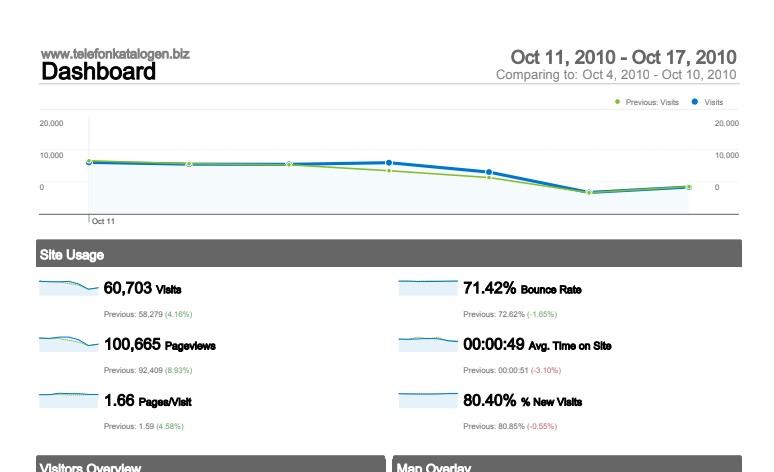Best growth hacking stories
Growing a business is a challenging task. Companies need to find means to market themselves.
Also, increase their customer base to survive. Growth hacking involves using strategies outside of the traditional marketing methods. They include growth-hacking tactics like A/B testing.
It helps for various purposes, including getting customers into your funnel more. Besides, finding out what kind of content resonates with them best.
This article will feature some of the most exciting growth hacking stories. The stories are from those who have achieved success using these techniques.
What is growth hacking?
It is clear that right now, the best way to show success for a startup company is to make money. Else, be left behind by your competition. That is why the recent popularity of growth hacking, which has recently gained lots of attention, isn’t much of a surprise.
Forget about “iterating” and “pivoting,” nowadays, growth hacking is the buzzword. It’s a new field in digital marketing. More so, used by both early-stage startups and big businesses like Nike.
Growth hacking is a term that describes strategies focused on the growth of a business. The time first referred to startups with small budgets, but that needed very high rates of growth.
Growing a company takes money, but startups may not always have it available. So a company engages in growth hacking when it tries to gain growth. Besides, creates users with less money than traditional marketing.
A growth hacking team comprises marketers, and managers, engineers. Also, developers that focus on building and engaging a company’s user base.
The growth hackers
Growth hackers are the central part of the growth hacking process at companies.
- Efforts by growth hackers grow a consumer base through low-cost. Also, scalable and creative strategies. One of the several examples of modern marketing is social media. Besides, search engines and viral marketing.
- Growth hacking is when someone works with marketing, but not in traditional ways. For example, a growth hacker might launch an app or video game on the development side. Then promote it to optimize its performance as a marketer also.
- Growth hackers are some of the most analytical and curious people you will ever meet.
- They focus on growth strategies by addressing the business’ goals and objectives. Hypothesize what exactly needs to be done to meet those goals and objectives. Test new ideas while understanding that their methods will need to be adjusted as time goes on. Then analyze whether these new approaches have been successful.
- The best Growth Hacker can set growth targets. Besides, priorities and identify markets for acquiring customers. After that point, he has success through reports and figures. This allows him to come up with ways to keep growing the company.
Growth hackers use various marketing strategies such as SEO. Moreover, social media and email increase consumers’ numbers.
Growth hacking is a concept that has seen its popularity rise over the past few years.
A business’s growth happens from inbound marketing. This is where traffic is brought to the website or social media following. Growth hackers use the AARRR pirate funnel framework. It is from Dave McClure to analyze their companies. But what applies depends on the specific organization.
Startups have minimal funds and experience. To compensate, the growth hacking team focuses on innovation. Also, user connectivity and scalability in their marketing campaigns.
Companies that have done growth hacking have a viral loop for their onboarding process. Potential customers hear about the company and its product through their network. Social media is being used for tourism. That is, as people try something themselves and then share it with their connections.
This campaign creates awareness. It also results in increased sales for a fraction of the cost of traditional marketing models.
While the methods of these companies may vary, they all have one thing in common. That is their unrelenting pursuit for growth. Facebook co-founder and chairman Mark Zuckerberg started with that consideration. It was at the core of his company’s philosophy.
The point of an advertisement is to get people interested in your product. Also, convert them into customers, and keep those customers for a long time. Besides, make sure they recommend you to others.
Growth hacking strategies that help to grow a company.
Growth hacking can be very different for any business. But they generally fall into one of three categories.
- Advertising
- Content Marketing
- Product Marketing
Structure your content marketing articles to include a compelling call-to-action with the offer of a 30 day trial period. The following are content marketing activities:
- Creating and maintaining an informative blog
- Sharing posts to other community blogs
- Creating content for social media posts
- Podcasting
- eBook writing.
- Joining relevant forums and communities
- Email marketing campaigns are crucial for any business.
- SEO can be used to improve your website or blog’s search engine ranking.
- Listed in relevant marketplaces
Product Marketing is the technique to make products more attractive. They include:
- A sign-up system to capitalize on the public’s fear of missing out
- To make onboarding more enjoyable, offer rewards during the process.
- Refer-a-friend incentives that benefit both the old and new users.
- Personalized services for affiliate marketing
Growth hacking is the pursuit of a company to increase its customer growth. That is through techniques that don’t correlate with optimizing such parameters. The parameters include conversion rates, revenue per visitor, or average orders.
The right blend of product development. Also, marketing activities designed based on what works for your company are often referred to as growth hacking. Many companies we interact with today have achieved success. That is by employing good practices in these measures.
Note that growth hacking is a concept and not a tested set of steps. When you grow accustomed to growth hacking, it will become more understandable. Study the instances of success from other companies. Also, try to solve similar problems on your own.
Best stories about growth hacking
Below is a selection of inspirational examples from the field of growth hacking you can use to guide your strategy.
1. Instagram used cross-promotion to grow its user base.
In 2012, Facebook acquired the company Instagram for 1 billion dollars. At the time, it had only 35 million users and no revenue stream. Ten months later, after reaching 100 million users, Instagram went public. Also, it continues to grow despite turbulence in Facebook’s stock price.
How did Facebook grow Instagram’s popularity?
Facebook integrated its various products into Instagram to cross-promote the app.
Companies take on cross-promotion as a growth hack to and grow their business. Today, software tools enable you to find companies that may be an excellent collaborative fit to streamline your work.
2. Dollar Shave Club’s video went viral
Video marketing is often effective. But Dollar Shave Club’s videos led to increased effectiveness.
They take a subject like shaving that’s generally mundane. Besides, convert it into something fun to share with a friend. The video posted to their YouTube channel amassed enough views to garner millions of subscribers. The sale to Unilever for $1 billion was an all-cash deal.
3. PayPal began using referrals to grow their business
“PayPal’s big challenge was to find new customers. They tried advertising, but it got too expensive. The company needed organic growth. Though it wanted people to sign up for the service in a viral way by giving them money if they invited their friends.”
This is why they did it. New customers registered got $10 for signing up, and existing ones got $10 for referrals. Growth went exponential because PayPal wound up paying $20 per new customer.
After an offset, PayPal concluded that the referral cost was too high. But they could get many clients out of it initially and helped them cross the tipping point for growth.
4. Groupon used social psychology to grow their company.
Have you ever seen an e-commerce website show how many items they have left and when deals will expire? That’s called applied social psychology. It is creating a sense of urgency by saying you would miss out on the lucrative offer.
With its growth hacking strategy, Groupon used this well in the early days but took it further. For example, Groupon required the least number of people to buy deals. But, despite this, they also had a limited quantity available. So, not only did it create urgency, but to avail of the agreement, you had to spread the word about Groupon and its deals!
One of the Groupon’s growth hacks that helped change their fortunes was hard to do.
5. The Sumo Group used website content upgrades to grow
Content upgrades are popular growth hacks used to collect email subscribers. Imagine a one-thousand-word informative blog post on a topic you’re interested in. The writing and the thoughts in this post had some natural substance. I hope there is more!
One has to click on a button and wait for a PDF file to download. The PDF file will provide more details about the subject at hand.
Once you’ve downloaded the detailed file, it becomes even more straightforward. Scroll up to see a form asking for your email address. As soon as we’ve received this information, you are free.
Sumo tried several content upgrades. As a result, it includes downloadable spreadsheets, infographics, videos, cheat sheets, and e-books.
Recognizing that people prefer the convenience of downloading rather than reading an entire article. Therefore, Sumo has released a 12,000-word guide in e-book format. Out of the 21.2% conversion rate Sumo received, 25 visitors. Also, completed the content as a whole and downloaded the full pdf document!
However, other companies have seen great success with content upgrades in the past. For example, Backlinko increased its conversion rate to 785% by use of cheat sheets.
6. Hubspot built free tools to get customers
Traditional marketing is ubiquitous, and Hubspot can be as well. International travel with kids will always pose a challenge. Still, parents who are lucky enough to have help from their grandparents. Also, other family members don’t encounter the same difficulties experienced by parents on their own.
When Hubspot’s founder wanted to include an assessment feature in the suite of tools. Besides, services are offered by the company. So it sought out a third-party provider while working with developers on building a small program. It could help assess websites. The free and responsive software was so successful that millions of people downloaded it. This helped increase awareness for the leading.
The company’s founder credits the tool for its initial success. Also, they have since been updating it. But, more so, launching new products to continue attracting customers.
7. Gmail used FOMO to launch
When Gmail debuted, it had a limited number of invites available to the public. Besides, the new email service was quite popular.
Fear of missing out (FOMO) is an effective way to grow a business. If you have a product that is valuable to many people, this strategy can help your business.
It was so effective that some people sold invites to the event on eBay.
But use this strategy. Google has used this for Google+, Buzz, and Wave, which were products that did not do well at all.
The Google+ strategy requires both sender and receiver to use a service that doesn’t work for communities like Facebook. Here, not all users are included in the recipient’s list.
For closed communities, you should select a community of size that is small and already connected. Some businesses follow this strategy by sending important invites to Harvard students.
8. Dropbox employed innovative social incentives to grow
Some companies incentivize and reward those who “share the word on social media.” That is running contests or announcing special rewards.
Dropbox came up with an innovative way to get people talking about its product on social media. Every time the user followed a company’s Twitter or Facebook account. They were rewarded with 125 MB of storage space. This made them talk more about Dropbox and created a new motive for using it as much as possible.
Before, Dropbox had 4.4 million Twitter followers. Incredible! Most of the recommendations go to this powerful growth-hacking effort.
9. Netflix distributed coupons to strategic partners
Netflix is partnering with DVD player manufacturers. The aim is to include a Netflix coupon inside the box of their products.
This helps solve a significant challenge for DVD manufacturers. Most customers don’t want to buy DVD players. Also, they find it hard to buy DVDs since these are not available in stores. DVDs were a hot commodity in the 2000s, and it could be easy to see why. The discs came accompanied by Netflix coupons for a potential thousand different titles.
During the same period, Netflix benefited because they could target customers who owned a DVD player. As a result, within one year, Netflix’s subscriber base doubled to 500,000 customers.
10. Hotmail used Freemium advertisements to grow
One popular way to charge customers today is freemium. This also applies to Saas products. It’s easier to up your prices when a customer has exceeded the limit you set for them than it is to introduce a brand new product.
Going freemium isn’t a marketing strategy that will lead to growth. Sure it makes onboarding customers more accessible. But you won’t get many of them without advertising.
But if you add ads that don’t bother customers, this can be a great way to grow your business.
Outlook began using it to spread the word. Every email sent by Outlook had a “Get your free email at Hotmail.com” signature at the end. The sender was advertising to the recipient. And the word spreads fast.
The tech giant Apple is not immune to this issue either for their emails. They have a “Sent from my iPhone” signature at the bottom of theirs. But one should be careful using this approach if you are paid product. Customers respond much more to products if they are of a higher quality.
11. Airbnb grew because it piggybacked on its rival’s success
The Airbnb team used an unusual strategy to grow the company in the early days. They enabled users to post on their competition, Craigslist! Crazy, right?
If you think about it, the “Airbnb” post on Craigslist was a genius growth hack at the time. Craigslist had a large customer base, and Airbnb was new. So, they allowed their users to post on Craigslist and encouraged them to do so!
Craigslist users who viewed the property were able to contact the owners only if they joined Airbnb. Yet, they found that listings on Airbnb were more superior and more excellent photographs. Also, better descriptions and more personal.
Due to recent success and increasing popularity, this was the tipping point that helped turn Airbnb into a household name.
Conclusion
The success stories above reveal the power of hacking. Some companies, like Google and Instagram. PayPal, leveraged growth hacks to such a degree that they became critical for their success. These are a few examples of businesses that embraced technology to explore new marketing means. Also, gain an edge over competitors in today’s economy.
Even though these growth hacking strategies proved successful for other companies. One will need to explore what will work best for you. For example, Google’s strategy for Gmail was not a success with Google+ even though both brands share some of the same intrinsic differences that made it an effective strategy in one case and lackluster in the other.
FAQs
What companies use growth hacking?
Several of the world’s biggest brands made their way to success through growth hacking. For businesses looking to multiply, it is an essential skill for them to learn.
- Dropbox.
- Airbnb.
- HubSpot.
- Yelp.
- Quora.
- PayPal.
What is paid growth marketing?
Growth marketing funnels help you grow your business by attracting new visitors. Also, increasing engagement and converting casual readers into customers. Our funnel design process includes two weeks of planning. During that time, we create a plan with your pain points and goals in mind.
Share This Story







